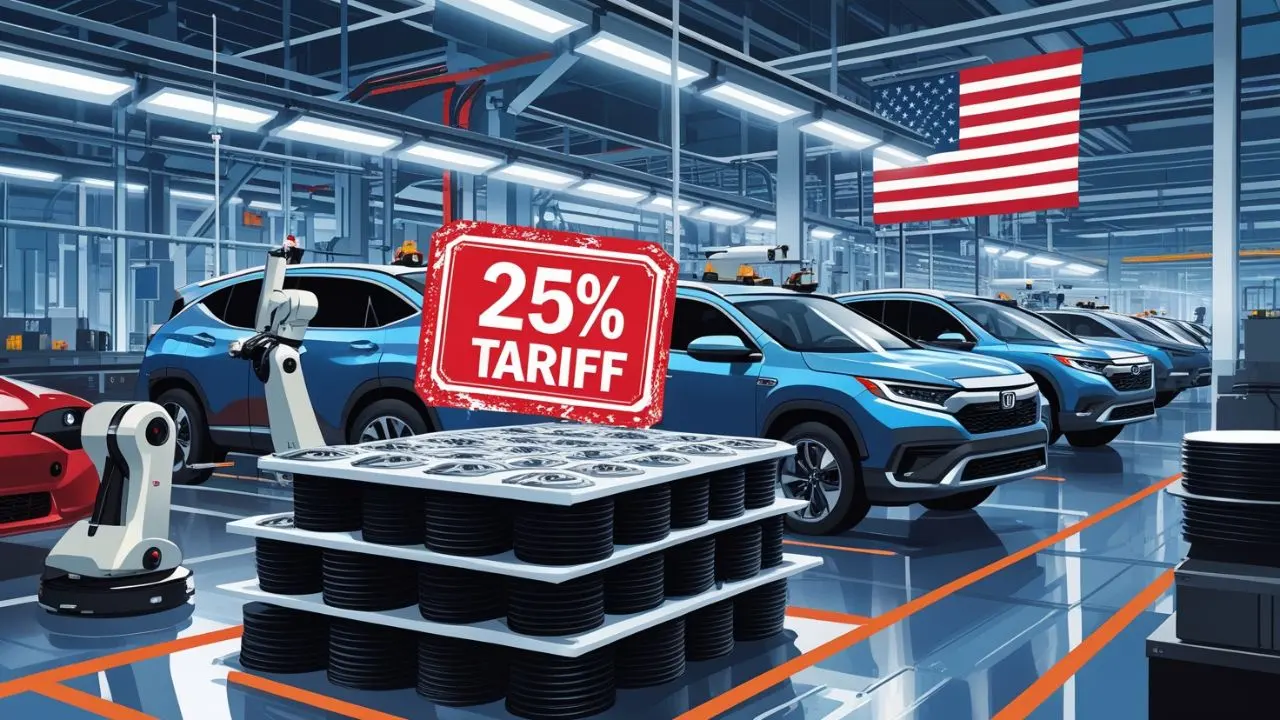“Trump’s 25% auto tariffs push Toyota, Honda to U.S. factories. Will car prices rise? Discover impacts & tips for buyers in 2025. #AutoNews”
In April 2025, President Trump’s 25% tariffs on imported automobiles and parts are sending shockwaves through the automotive industry. Automakers like Toyota, Honda, and Nissan are scrambling to shift production to the U.S. to avoid hefty costs, a move that could create jobs but also raise car prices. Here’s what you need to know about this seismic shift and how it might affect your next car purchase.
The Tariff Breakdown
Announced on March 26, 2025, and effective April 3, the tariffs target sedans, SUVs, minivans, light trucks, and over 150 auto parts categories, including engines and lithium-ion batteries. Parts tariffs begin May 3, with exemptions for USMCA-compliant components still under review. These measures aim to boost U.S. manufacturing but are disrupting global supply chains.
Automakers’ Response
- Toyota: The Japanese giant is eyeing U.S. production for its top-selling RAV4 SUV to dodge tariffs, a move that could bolster American factories but increase costs for buyers. [Source: Reuters, April 18, 2025]
- Honda: Planning a 30% boost in U.S. production over two to three years, Honda aims to make 90% of its U.S.-sold cars locally, potentially stabilizing prices for models like the CR-V.
- Nissan: Cutting Japanese production of the Rogue SUV, Nissan is maxing out its Tennessee plant to meet U.S. demand tariff-free.
- Ford: The American automaker has warned of possible price hikes in May if tariffs persist, affecting popular models like the F-150.
What It Means for Consumers
The tariffs could lead to higher prices for imported vehicles and components, especially for brands reliant on foreign production. Experts predict a 5-10% price increase for models like the Nissan Rogue or Toyota Camry by mid-2025. However, U.S.-made vehicles, such as the Ford Mustang or Tesla Model 3, may remain more price-competitive.
Tips for Buyers:
- Act Fast: Consider purchasing before May 3, when parts tariffs could further inflate costs.
- Go Local: Opt for U.S.-built models to avoid tariff-driven price spikes.
- Monitor EVs: Tariffs on lithium-ion batteries may slow EV price declines, so compare deals from Tesla, Rivian, and Ford.
The Bigger Picture
The tariffs are part of a broader push to revive U.S. manufacturing, potentially creating thousands of factory jobs. However, they risk straining trade relations and could reduce EV affordability, as battery costs rise. With Tesla’s EV market share dipping to 7.2% in February 2025, competitors like Ford and Volkswagen are seizing opportunities to expand their electric lineups.
As automakers pivot to U.S. production, 2025 is shaping up as a pivotal year for the auto industry. Stay informed on price changes and production updates to make smart buying decisions. Check back for the latest on how these tariffs are reshaping the cars you drive.
Sources: Reuters, Automotive News, Foley & Lardner LLP

